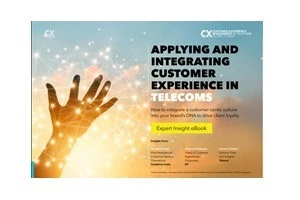Top takeaways from CEM Telecoms Global
Add bookmark
For the 14th year customer experience professionals from across the globe gathered at the Annual CEM Telecoms Global Summit.
The event looked at new and old-age customer touch-points such as retail, contact centres and self-service and peeked behind the scenes of customer communication, both active and passive, to find out what customers need from telecoms firms and how they can work to meet and exceed expectations effectively.
Here we provide a brief look at lessons learned onsite at the event.
Telecoms customer experience management
- Customer experience is now seen by many as a key competitive differentiator. Customers value personalised and frictionless experiences. One speaker at the event noted that 89% of today’s businesses compete on customer experience. This level has rocketed in the past nine years with less than 40% using CX as a key tool for winning market-share back in 2010.
- Self-service is becoming the norm for consumers and can drastically increase operational efficiencies for telecoms firms. This will relieve some internal pressure as customer service often sits as a massive cost for telecoms firms especially those supporting large customer bases.
- Voice-bot assistants can be so realistic phonetically, semantically and in speed that customers can mistake them for humans. Half of the effort that goes into implementing a chat-bot is spent on understanding your users and their expectations for agents. Bots should develop their responses by learning from the most skilled agents.
- The theory ‘Build-it and they will come’ doesn’t apply to digital CX initiatives. You need to drive customers to adopt new behaviours/tools using a carrot and stick approach in equal measure. Incentivise customers to comply with the change and provide a drawback for going against the change. For example, inform customers that you have changed how you support them. For simple queries they can pay a customer service fee if they want to be supported by a human agent over the phone (stick), alternatively they can be serviced by a chat-bot or go online to access the information they need for free (carrot). The conversion rate on using a carrot alone is substantially lower than using the carrot and stick in unison. Companies on-site at the event revealed they had managed to use this method without seeing any increase on customer churn rates or damage to NPS scores.
- It is important to raise awareness for any changes in service or tech. When they were first implemented people struggled to trust ATMs to access cash from their bank accounts but over time the public accepted the new process. The customer should be given the value proposition for why they should be on-board with this change.
- It was mentioned at the summit that instead of focusing on chat-bots telecoms firms should deploy artificial intelligence (AI) in the provision and delivery of network services. For instance, deploying fibre, network predictions and fault maintenance to prevent failures and therefore calls to call-centres.
- Employee engagement matters, it directly correlates to customer experience levels and drastically reduces staff turnover rates when companies pay attention. A good question to ask employees is: ‘How difficult do we make it to do your job?’ Inject life and excitement into customer experience projects by providing staff immersive illustrations of the current points of friction for customers versus the CX utopia your business is aiming for – Ingrid C Lindberg, CEO & Founder of Chief Customer
- Customers are more likely to be happy or provide NPS improvements if agents remember their last experience with your brand.
- Make sure your customer index corresponds to the reality. Customers can say one thing, but inevitably do another. Speakers at the event mentioned the conundrum some telecoms firms face of having healthy satisfaction and NPS levels but also suffering from high customer churn rates.
In order to untangle this strange dynamic, measure customer sentiment using tools such as text analytics to pinpoint what is making customers leave you. Once you uncover these pain-points, instead of focusing on NPS scores turn these pain-points into your main metrics for employees. This method will ensure your brand is improving the factors that are of real value to customers and influential to their retention. - Ingrid C Lindberg, CEO & Founder of Chief Customer
And finally,
- CX is a marathon filled with a tonne of sprints – Ingrid C Lindberg, CEO & Founder of Chief Customer
Read: Top experience management trends businesses must know for 2019









![[BY INVITATION ONLY] The State of contact center efficiency in the age of AI](https://eco-cdn.iqpc.com/eco/images/logos/wMQuMdHjZYMR8XwzDeJJjK0n4X4mkLPRkJ08VEvR.webp)












